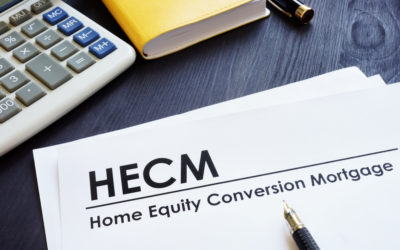Principal Limit (aka Principal Lending Limit) Borrowers
Borrowers who access their reverse mortgage proceeds as a line of credit — whether in part or in full — can take advantage of the growth feature of their principal lending limit. Reverse mortgage loans (or Home Equity Conversion Mortgages — HECMs) can be accessed as a lump sum, monthly payments, or as a line of credit.
The line of credit option, however, allows borrowers to choose how much of their available credit they can use; and the total available line of credit grows over time as mortgage insurance and interest are applied to the reverse mortgage. Read on to find out about the growth of the principal limit on a reverse mortgage.
What is the Principal Limit on a Reverse Mortgage?
The principal limit on a reverse mortgage is the total amount of money that is available to a borrower who has been approved for a reverse mortgage. This amount is decided by a few factors, such as:
- The appraised value of the home
- Amount of equity owned in the home
- The age of the borrower
- Current reverse mortgage interest rates
The reverse mortgage principal limit becomes available to a borrower after their loan has been approved, and can be accessed as a line of credit, monthly payment, or a lump sum. Growth of the principal limit on a reverse mortgage occurs if the borrower has decided to use a line of credit. Here’s how that works.
Why Does the Principal Limit Grow?
Borrowers who elect to receive their reverse mortgage proceeds as a line of credit can determine for themselves how much of that credit they need at a given time. For example, if the borrower is able to secure a $150,000 line of credit through their HECM loan, they might choose to only use $1000 of it in their first month.
In that case, it means that the remaining $149,000 will continue to grow, as it is not added to their loan balance — only the $1000 which the borrower used is added to their loan balance. The interest rate and mortgage insurance rate are both applied to the available credit, meaning that as time passes, more money becomes available for withdrawal by the borrower.
Additionally, if borrowers make early payments on their reverse mortgage, they can add to the total amount of unused credit available to them by paying down their loan balance. For more information about the HECM program, visit the HUD.gov website.
How is the Principal Limit Growth Rate Calculated?
The principal limit growth rate is calculated by adding together the interest rate on your reverse mortgage and the mortgage insurance premium (MIP). For example, if the effective rate is 4.5%, and the mortgage insurance rate is 0.5%, then the principal limit would grow at a rate of 5%.
This feature of line of credit reverse mortgages is enticing for many retirees curious about increasing available funds as they progress through retirement. Lines of credit can also be paired with monthly payments for a mixed method of receiving reverse mortgage proceeds. If you have more questions about how a reverse mortgage can benefit your retirement, feel free to speak with a GoodLife Reverse Mortgage Specialist. They will be happy to assist you, and help you determine whether a reverse mortgage — or which method of payout — is right for you.
Jump to…
Recent Articles
When Is the Best Time to Get a Home Equity Conversion Mortgage?
You've built all this equity in your home over the years, but when is the right time to access it? If you're in the golden years of your...
How to Access the Equity in Your Home
Did you know that it is possible for older adults who have reverse mortgages to use their home equity in order to fund their retirement?...
Is a Reverse Mortgage a Good Idea?
2021 was a big year for the reverse mortgage. With over 52,000 originating in 2021 alone, it's not difficult to see that it's worth...

 1-866-840-0279
1-866-840-0279





